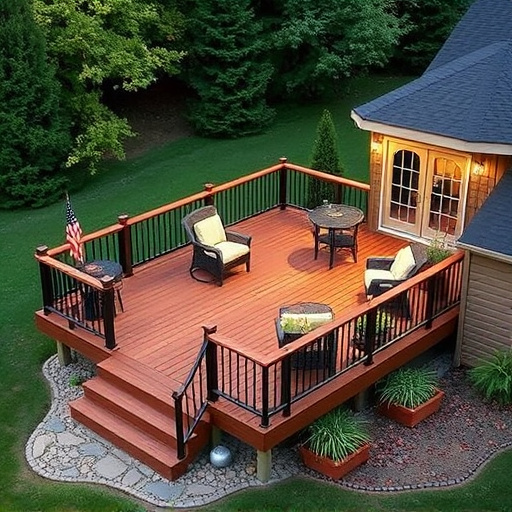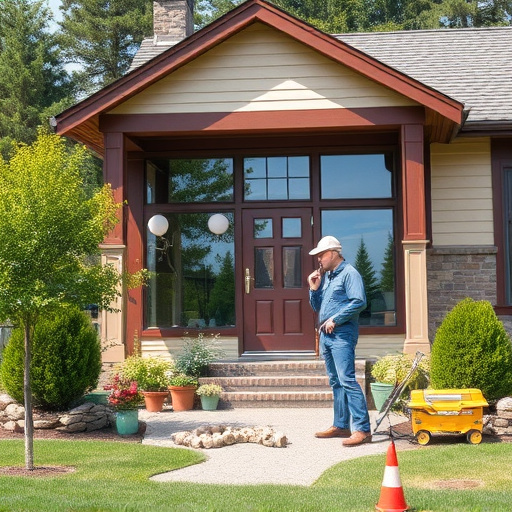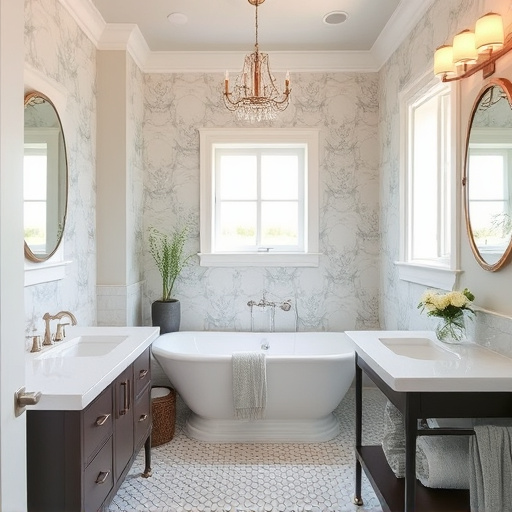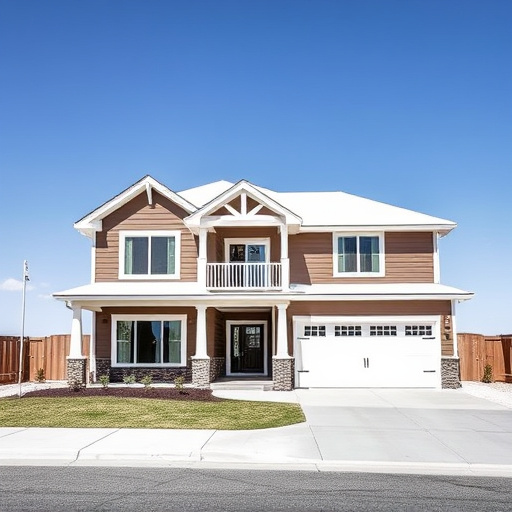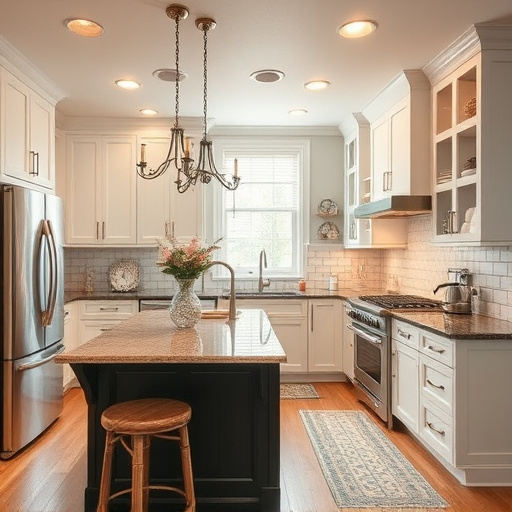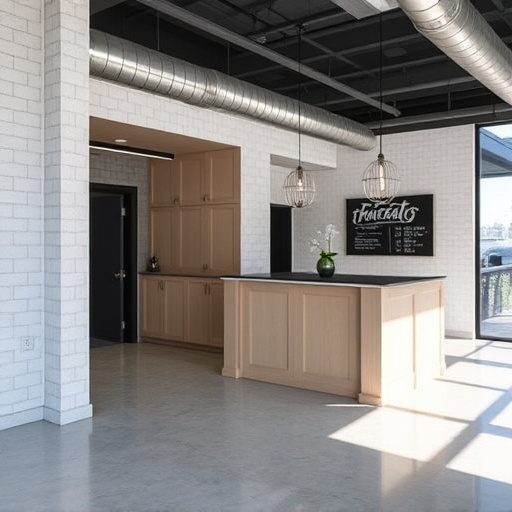When remodeling floors, consider material traits for ideal integration with your home design. For warmth and style, hardwood suits living rooms and bedrooms but is costly and labor-intensive. Water-resistant ceramic tile or natural stone are best for bathrooms. Soft carpets offer comfort but require frequent cleaning. Blend textures, colors, and styles for a cohesive look, considering room functionality and traffic patterns. Professional services ensure expert advice on subfloor prep, flooring replacements, and painting techniques for a stunning flooring remodel.
Revamp your space with a unique flooring design! Combining different types of flooring can create an eye-catching, dynamic look during your next remodel. This comprehensive guide explores the art of merging materials, from wood to tile and carpet, offering expert tips on evaluating options, strategic design considerations, and installation techniques. Discover how to achieve harmony in your home, blending aesthetics and functionality seamlessly.
- Evaluating Your Flooring Options: A Comprehensive Guide
- Strategizing for Seamless Combinations: Design Considerations
- Installation Tips for Achieving Harmony in Your Remodel
Evaluating Your Flooring Options: A Comprehensive Guide
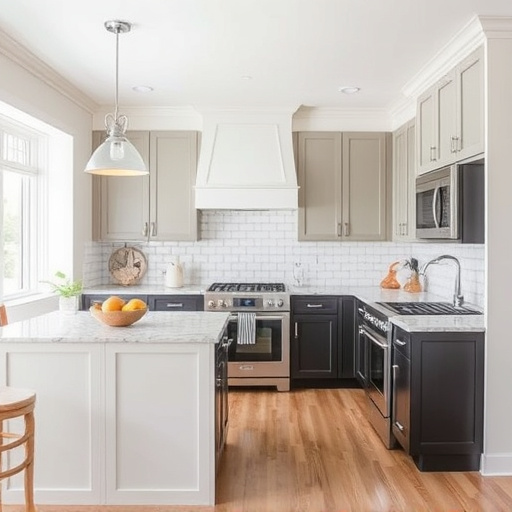
When considering a flooring remodel, evaluating your options can feel overwhelming given the vast array of materials available. Start by understanding the distinct characteristics and purposes of each flooring type. For instance, hardwood floors exude warmth and classic elegance, making them popular choices for living rooms and bedrooms in whole house remodels. They’re durable but can be pricier and more labor-intensive to install compared to luxury vinyl or laminate.
For bathrooms and other high-moisture areas, water-resistant options like ceramic tile or natural stone are ideal. These materials offer both style and durability, making them suitable for interior painting projects that aim to elevate space aesthetics. On the other hand, soft floors such as carpeting provide comfort and insulation but require more frequent replacement and cleaning, especially after bathroom renovations where moisture and humidity can accumulate. Weighing these factors will help you make informed decisions, ensuring your chosen flooring seamlessly blends with the rest of your home’s interior design during your next remodel project.
Strategizing for Seamless Combinations: Design Considerations
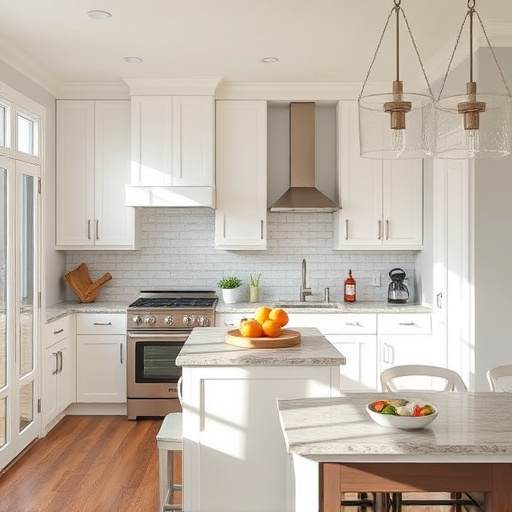
When combining flooring types during a remodel, strategic design considerations are key to achieving seamless integration. Start by understanding the space’s architecture and existing elements—like architectural details or room layouts—to ensure your chosen flooring types complement each other. Consider the functionality of each room; for example, high-traffic areas like kitchens and hallways may require durable materials that can withstand heavy use.
At the same time, focus on aesthetics to create a cohesive look. Blend different textures, colors, and styles by aligning patterns or using transitional pieces like area rugs. Remember, balance is crucial—a mix of light and dark tones, or warm and cool hues, can add depth and interest without creating visual chaos. Incorporate personalized touches through customized flooring solutions or unique design elements to make your space truly one-of-a-kind, enhancing the overall appeal of your renovation services.
Installation Tips for Achieving Harmony in Your Remodel
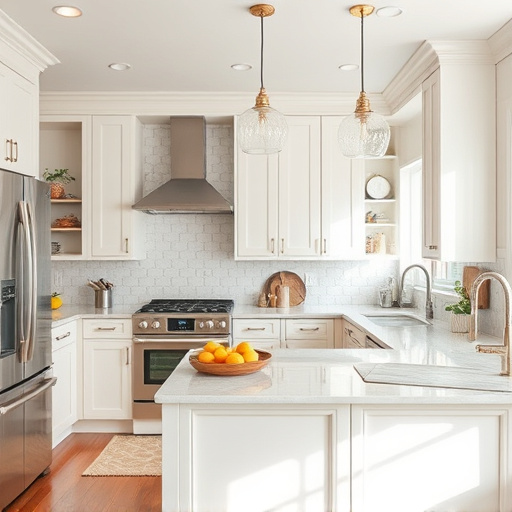
When combining flooring types during a remodel, achieving harmony involves careful planning and installation techniques. Start by selecting flooring materials that complement each other in terms of style, color, and texture. For instance, pairing a light-colored wooden floor with a subtle area rug or a neutral tile can create a cohesive look. Ensure seamless transitions between floors by using consistent edge treatments, such as molding or trim, to blend different flooring types smoothly.
During installation, consider the layout and traffic patterns in each room. High-traffic areas might require more durable flooring options like hardwood or vinyl. Conversely, bedrooms or living rooms could accommodate softer materials like carpet or area rugs. Properly prepare subfloors before installing new flooring to ensure a level surface. Professional renovation services often offer expert advice on floor replacements and exterior painting techniques that can enhance the overall aesthetic of your flooring remodel, creating a beautiful and functional space.
When combining flooring types during a remodel, it’s essential to consider both aesthetic appeal and functional practicality. By strategically planning your design and carefully executing the installation, you can create a stunning and harmonious floorplan that elevates your space. Incorporating diverse flooring materials allows for unique visual interest and can effectively define different zones within a room. Remember, a successful remodel involves evaluating your options, considering layout, and mastering the installation process – all key elements to achieving a beautiful and lasting flooring combination.

